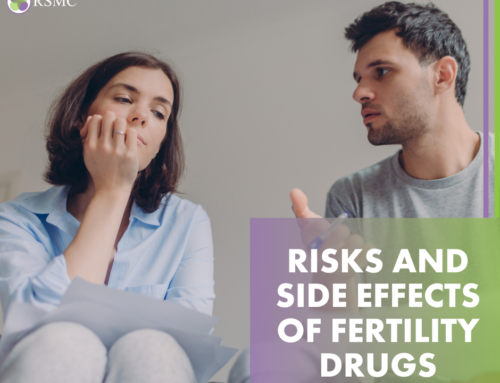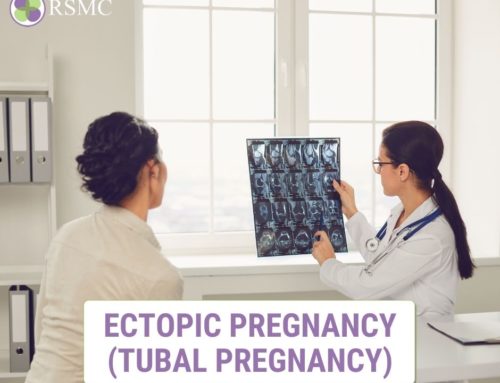Whether you or your partner is in the early stages or late stages of endometriosis, it is important to know how in vitro fertilization treatments with RSMC can help you increase you or your partner’s infertility. Endometriosis occurs when the tissue lining in the uterus grows outside of it, which can lead to infertility or early pregnancy loss. The ability to conceive is greatly reduced when you have endometriosis, and the natural conception rate goes down even in the early stages of the disease. Those using fertility drugs, whether they are using IUI or not, will also have a lower rate of pregnancy, especially compared to women who do not have endometriosis.
Endometriosis can have varying effects on women who are trying to conceive The following are common effects:
- It creates a toxic pelvic environment which compromises fertility: In the early stages of endometriosis (Stage 1), it has been shown that the chances of pregnancy occurring is 5 times lower than normal. This happens even if there is no obstruction or tubal adhesions that might restrict egg-pick up at ovulation, no overt sign of tubal damage, and even when laparoscopy has been performed. This happens because both visible and nonvisible (occult) endometriotic lesions release toxins in the woman’s body, which mix with pelvic secretions. After ovulation, eggs travel through these secretions to reach sperm in a Fallopian tube and become compromised by the toxins, causing a reduction in the effectiveness of sperm to fertilize the eggs. This also explains why ovarian stimulation using fertility drugs (IUI) and surgery to ablate endometrial deposits is unlikely to work in women with endometriosis.
- Endometriosis constantly evolves: Endometrial deposits take time to become pigmented and show up in laparoscopy or even laparotomy. Coupled with the fact that non-visible lenses also produce toxins might explain why some women have unexplained infertility. It is only later, when there is bleeding into the lesions that cause iron pigments to form, will the correct diagnosis of endometriosis be confirmed. Remember that for every pigmented lesion revealed in laparoscopy, there are probably many more developing and in the process of becoming pigmented. This is also the reason that surgery only permits the removal of identified, pigmented endometriosis and does not guarantee fertility.
- It causes pelvic adhesion and tubal obstruction: The lesions caused by endometriosis tie the ovaries and the fallopian tubes to the adjacent pelvic structures, preventing egg pick-up. In advanced cases, it causes damage to the fimbra (finger-like projections) or make them fuse together at the end of the tube. This also prevents egg pick-up and transportation to the sperm in the lower tube.
- The presence of endometriotic cysts can reduce egg quality: Like other space occupying lesions, ovarian endometriosis can activate connective tissues, causing excessive production of testosterone (male hormone). This can compromise egg quality and embryo development.
- Immunologic Implantation Dysfunction (IID): This occurs when uterine natural killer cells (NKa), prevent implantation leading to infertility or even miscarriage. This happens to about ⅓ of women with endometriosis.
Reproductive Dysfunction Manifestation in Patients with Endometriosis
The reproductive dysfunction in women with endometriosis manifests in the following ways:
Infertility: This includes all types of infertility.
- Primary infertility which can be diagnosed clinically by ultrasound (endometriomas), or at Laparoscopy.
- Secondary infertility: Endometriosis has been shown to be one of the main causes of “secondary infertility”
- Unexplained Infertility: Endometriosis is also one of the leading causes of “unexplained infertility”.
- Unexplained IVF failure: Endometriosis has also be shown to cause unexplained IVF failure with good quality embryos usually because of IID
- Poor quality eggs/embryos: Because of compromised ovarian blood flow as a result of scar tissue, and ovarian endometriomas causing increased ovarian testosterone production.
- Repeated failure to conceive in spite of induced ovulation and/or IUI: This is due to a toxic pelvic environment and/or undiagnosed IID.
Early Pregnancy Loss: This is typically due to IID resulting from antiphospholipid antibodies and/or NKa.
Management of Infertility in Women with Endometriosis
There are many ways to manage this condition and all of them take into consideration the age of the woman, whether she has early or advanced endometriosis and whether she has IID (Immunologic Implantation Dysfunction). Each one has different techniques for managing them.
A) Young women (younger than 35) with early endometriosis who ovulate normally: IVF is a great way to increase the chances of becoming pregnant. However, a woman should try on their own (using timed intercourse) for a set period of time, if she has early stage (Stage 1) endometriosis and is ovulating normally, before resorting to IVF. IVF should only be used first if they have (DOR) or have IDD associated with NKa/APA.
B) Young women (younger than 35) with early endometriosis who ovulate abnormally: Some women with endometriosis have absent, irregular or dysfunctional ovulation. In such cases, the use of fertility drugs with/without intrauterine insemination is often recommended. However, that while the use of fertility drugs might re-establish functional ovulation, it cannot and will not address the adverse effects of a “toxic pelvic environment” on egg fertilization potential. Thus, such ovulation induction increase will not decrease the likelihood of a reduced pregnancy rate per cycle of treatment.
C) Older women and those with Diminished Ovarian Reserve (DOR): On the other hand, women over 35 years of age, and those who have Diminished Ovarian Reserve (who are facing a rapidly “ticking biological clock”), should, regardless of age, go directly to IVF because they do not have the luxury of time.
D) Women with advanced Endometriosis: Women with more advanced endometriosis (stage 3, 4), should, regardless of age and/or whether or not they are ovulating normally, consider IVF as their first choice. Those women who have one or more sizeable (>2cm) ovarian endometriomas, should have these aspirated at the start of the stimulation for IVF, or have them removed surgically or by sclerotherapy, prior to undergoing ovarian stimulation for IVF.
E) Women with Immunologic Implantation Dysfunction (IID): Given the added physical, financial and emotional burden associated with selective immunotherapy for IID, women who have NKa-related endometriosis (regardless of its severity) should do IVF.
At Reproductive Sciences Medical Center, we offer a consultation and also have free educational seminars on this topic. Schedule your consultation today and see how we can help you.























